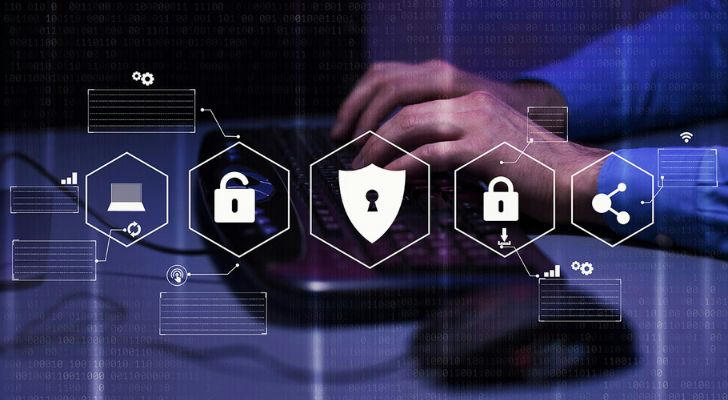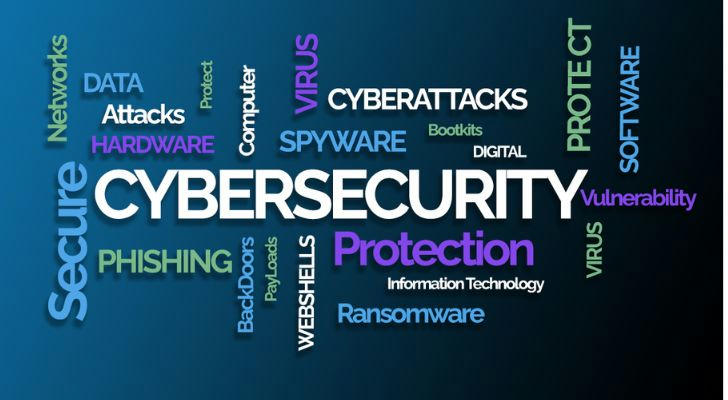Cybersecurity Basics: What Everyone Should Know in 2025?
In 2025, the digital realm presents both unprecedented opportunities and escalating threats. Cybersecurity has become a fundamental concern for individuals, businesses, and governments alike. With the proliferation of connected devices and the integration of artificial intelligence (AI) into various sectors, understanding the basics of cybersecurity is essential for safeguarding personal and organizational assets. Every internet user should be aware of how cyber risks evolve and how basic knowledge can reduce vulnerabilities.

📊 The Evolving Cyber Threat Environment
Surge in Cyberattacks
Cyberattacks have intensified in both frequency and sophistication. According to the World Economic Forum's Global Cybersecurity Outlook 2025, 72% of organizations reported an increase in cyber risks over the past year, with 63% attributing this to the complex and evolving threat landscape. Cybercriminals exploit weaknesses in networks, software, and human behavior, making prevention a multi-layered challenge.
AI-Powered Threats
Artificial intelligence is a double-edged sword in cybersecurity. While AI enhances defense by improving threat detection and automating responses, malicious actors increasingly leverage AI to conduct more effective and adaptive attacks. AI-driven phishing campaigns can generate highly convincing fake messages tailored to individual targets, and AI-powered malware can evade traditional security software. This arms race between attackers and defenders requires continuous innovation and vigilance.
The Rise of Social Engineering
Beyond technical exploits, social engineering remains a popular tactic for attackers. Manipulating human psychology to obtain confidential information or access credentials can bypass even the strongest technical defenses. Phishing, pretexting, and baiting techniques rely on trust and urgency to deceive users.
🛡️ Fundamental Cybersecurity Concepts
Strong Authentication Practices
Multi-Factor Authentication (MFA) combines passwords with additional verification methods, such as biometric scans, hardware tokens, or one-time codes sent to mobile devices. MFA dramatically reduces the risk of unauthorized access even if passwords are compromised. Industry data shows accounts with MFA enabled suffer 99.9% fewer breaches (Microsoft Security Report, 2024).
Password Management
The use of password managers enables users to create complex and unique passwords for each account, eliminating password reuse that can amplify security risks. Password managers store encrypted credentials securely and fill login forms automatically, improving both security and convenience.
Regular Software Updates
Software vendors frequently release patches to fix vulnerabilities discovered after product release. Cybercriminals exploit these known weaknesses if systems remain unpatched. Keeping operating systems, applications, and security tools up to date is a critical defense layer. Organizations with delayed patching processes often face higher breach costs and longer recovery times.
Awareness of Phishing Attempts
Phishing remains one of the most effective attack vectors. Cybercriminals craft emails or messages that appear legitimate to trick recipients into clicking malicious links or revealing sensitive information. Being cautious of unsolicited communications, verifying sender details, and avoiding link clicks without confirmation are essential practices.
Data Encryption
Encrypting sensitive data both at rest and in transit prevents unauthorized access even if attackers breach systems. Encryption transforms readable data into coded information that requires decryption keys to interpret, thereby protecting privacy and compliance with regulations like GDPR and CCPA.

🌐 Emerging Cybersecurity Trends in 2025
Zero Trust Architecture
The Zero Trust security model operates on the principle of "never trust, always verify." This means no device, user, or system is trusted by default, regardless of whether it is inside or outside the organizational network. Continuous verification, strict access controls, and micro-segmentation reduce the risk of lateral movement by attackers.
Cloud Security Enhancements
Cloud computing adoption continues to rise, driving the need for robust cloud security strategies. Securing cloud environments involves encryption, identity and access management (IAM), continuous monitoring, and compliance auditing. The shared responsibility model makes it vital for both cloud providers and customers to understand their security roles.
Rise of Ransomware
Ransomware attacks are increasingly targeting a wide range of organizations, from healthcare providers to local governments and small businesses. These attacks encrypt valuable data and demand payments to restore access. The operational disruptions caused can lead to severe financial and reputational damage. Implementing preventive measures and developing comprehensive recovery plans are critical defenses.
Supply Chain Vulnerabilities
Recent high-profile cyber incidents have highlighted the risks inherent in third-party software and services. Supply chain attacks occur when threat actors compromise trusted vendors to gain access to larger networks. Strengthening supplier security and conducting thorough risk assessments are becoming standard practices.

🧠 Building a Cybersecurity-Conscious Culture
Employee Training and Awareness
Humans often represent the weakest link in cybersecurity. Training programs focused on recognizing threats, reporting suspicious activities, and following security policies significantly reduce risks. Simulated phishing campaigns and regular updates keep security top of mind.
Incident Response Planning
Despite best efforts, breaches may still occur. Organizations that develop, test, and update incident response plans can contain damage more effectively and reduce downtime. Plans include identifying roles, communication protocols, and recovery procedures.
🏠 Personal Cybersecurity Measures
Securing Home Networks
With remote work now a norm, securing home networks is vital. Changing default router passwords, enabling the latest encryption protocols such as WPA3, and keeping firmware updated prevent unauthorized access. Network segmentation can separate work devices from personal gadgets to limit exposure.
Device Security
Installing reputable antivirus and anti-malware software, keeping firewalls enabled, and managing app permissions carefully protect against various digital threats. Users should be cautious about downloading software and avoid connecting devices to untrusted networks.
Privacy Settings and Digital Footprint
Adjusting privacy settings on social media and online services limits data exposure. Being aware of digital footprints helps prevent personal information from being used maliciously or for identity theft.
🔍 Conclusion: Proactive Steps Towards Cyber Resilience
Understanding and implementing basic cybersecurity measures is no longer optional in 2025; it has become a necessity for safe participation in the digital economy and society. Staying informed about emerging threats, embracing best practices, and fostering a culture of security awareness can significantly reduce risks. The cyber landscape will continue to evolve, and adaptability remains the strongest asset for individuals and organizations alike.
